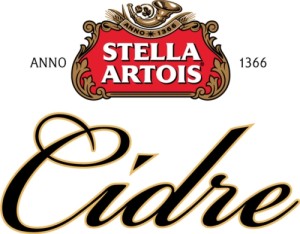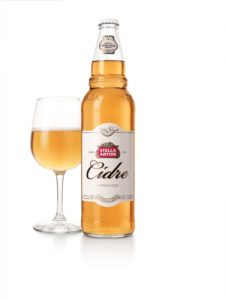 Stella Artois, the best-selling Belgian beer in the world, is introducing Stella Artois Cidre to the surging U.S. cider market.
Stella Artois, the best-selling Belgian beer in the world, is introducing Stella Artois Cidre to the surging U.S. cider market.
Stella Artois Cidre is a crisp, distinctive European-style cider made with apples hand-picked from wine growing regions. Initially it will be available in 26 U.S. states, with further expansion possible in 2014. Sales to retailers begin on May 13.
Adam Oakley, vice president of import, craft and specialty brands at Anheuser-Busch, said the cider category is seeing 110 percent growth in the United States, and this new brand helps to meet the growing demand for premium ciders with a more complex taste profile.
“Stella Artois Cidre is designed to be savored and is very different from sweeter, domestic U.S. ciders,” Oakley said. “Stella Artois Cidre has the potential to change people’s perceptions of cider here, offering a refreshing alternative to white wine.”
 With the U.S. cider market seeing triple-digit growth, it has become one of the fastest-growing beverage categories in the United States. Early growth in the category was driven primarily by sweeter domestic ciders; this has been balanced of late by a consumer demand for drier, premium European-style ciders. Stella Artois Cidre represents the finest of the latter category.
With the U.S. cider market seeing triple-digit growth, it has become one of the fastest-growing beverage categories in the United States. Early growth in the category was driven primarily by sweeter domestic ciders; this has been balanced of late by a consumer demand for drier, premium European-style ciders. Stella Artois Cidre represents the finest of the latter category.
“Cider drinkers are now approaching cider with a sophistication similar to that of wine drinkers,” said Marc Stroobandt, a Belgian master sommelier.
“To capture their interest, ciders certainly need to be refreshing and savory, but people also want something a little more complex and distinct, which Stella Artois Cidre offers.”
Stroobant said that similar to white wines, drier ciders such as Stella Artois Cidre are designed to be savored and pair well with chicken, fish and a broad selection of cheeses, including Camembert-style cheeses, English cheddars, semi-firm cheeses such as Gruyere and washed-rind cheeses. Stella Artois Cidre’s tart profile also balances well with Asian and spicy foods and light salads.
Stella Artois Cidre will be fermented in Baldwinsville, New York, using apples picked from wine-growing regions in North and South America.

You must be logged in to post a comment Login